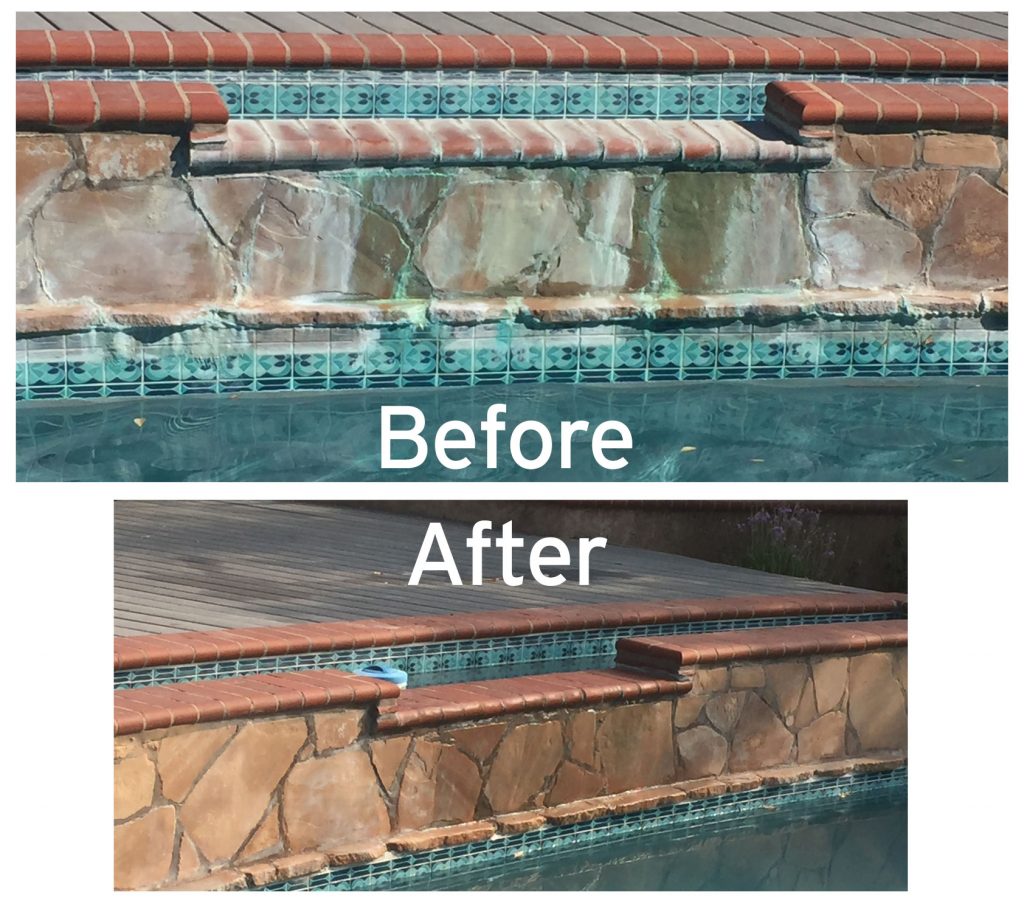Have you noticed some greyish white scales in your pool? Or some discoloration right around the water line in your pool? Or even some crusty deposits in the corner of your pool? If yes, those are calcium deposits.
What are Calcium Deposits in the Pool?
Calcium carbonate is a chemical compound made up of a carbonate ion and a calcium ion. It is the main constituent of limestone. This is because limestone is a combination of calcium carbonate and magnesium carbonate.
Calcium carbonate can settle in your pool and form whitish and possibly rough deposits. The effects of limestone are negative for your swimming pool: scaling, deterioration of equipment, cloudy water, etc. Lime deposits in a swimming pool can also promote the development of algae on the walls.
Depending on where you live, the water contains more or less calcium carbonate. Before filling your pool, measure the hardness of the filling water. This will allow you to select the right treatment products, but also to choose the suitable swimming pool filter, because some clog and scale more easily than others (the diatomaceous filter in particular).

Removing Calcium Deposits From Your Pool
This must be one of the many questions on the mind of a pool owner.I would be giving 5 ways on how to remove calcium deposits from your pool.
1. Use a calcium releaser
These products makes it easy to remove calcium deposits. While selecting your product, select acid free calcium releasers, as these products are left a long time on your pool tile before scrubbing off, and the acid could destroy your pool finish.
2. Use scaling treatment
If your pool is made of fiber glass, scaling treatment is advised because other methods would scratch the glass since they involve brushing.
3. Use a pumice
This rock is also effective in removing calcium deposits in pools, make sure the surface of both the rock and the pool is wet, and do not scrub too hard in order not to deface your pool.
4. Use white vinegar and a scrub brush
Fill a water bottle spray with half water and half vinegar solution, spray on your pool tile and leave for some minutes before rubbing gently with a scrub brush.
5. Use muriatic acid
This is also known as Hydrochloric acid, this acid has high strength in removing mineral deposits, calcium deposits inclusive.While using it, you should be fully clothed with your google and gloves in order to avoid safety hazards. Make sure not to leave the acid too long because you do not want to destroy the finish of your pool.
Bottomline
You can always try:
Calcium deposits are caused by an imbalance between the calcium levels and the Ph of your pool.Before we go into removing these calcium deposits, to prevent future deposits you might want to do the following:
(1) Try reducing evaporation in your pool, by installing a pool cover, because when water evaporates, calcium becomes concentrated.
(2) Try draining your pool and lowering the PH of the new water, this is done so if the pool is exposed to sunlight, there won’t be an imbalance between the PH and the calcium level.
Calcium deposits in pools can have side effects on people who use the pool, these effects can range from eye irritation to whole body irritation, they are also irritating to look at and would reduce the interest of people in your pool.
When removing these deposits, make sure you are dressed properly to avoid safety hazards and also try as much as possible not to destroy the finish of your pool.
With this guide, we are sure you will bring your pool to its former glory.



